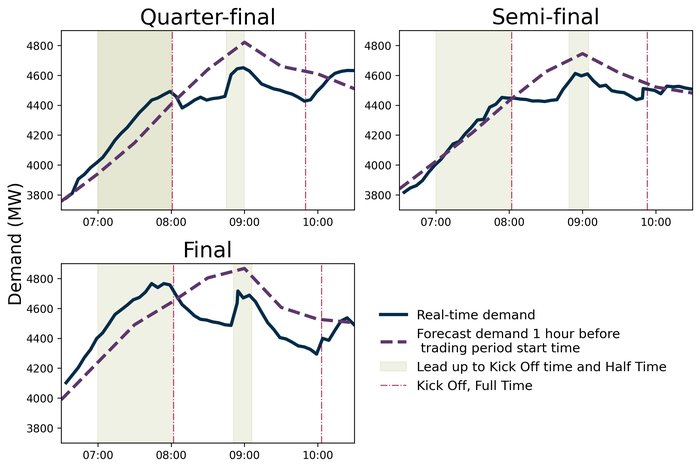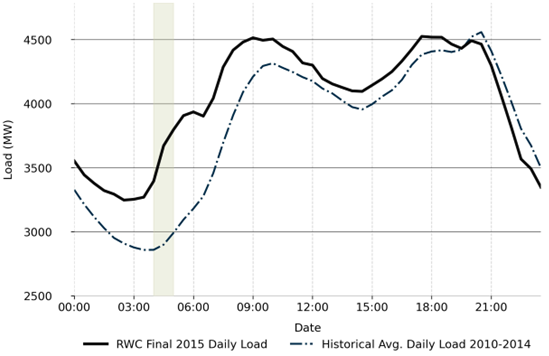Eye on electricity
All Blacks “demanding” support from home with electric performance at RWC 2023
- Consumers
- Prices
There was a wave of change as New Zealanders got back on side with the All Blacks as they steadily progressed through each battle to the 2023 Rugby World Cup final. Although the outcome was not the one Kiwis hoped for, their support was evident in demand on Aotearoa’s electricity grid.
Leading up to kick-off for the final match, electricity demand was around 230MW higher than forecast, with pubs and rugby clubs opening their doors. A large number of Kiwis also got up early to cheer their team on from home.
Demand dipped after kick-off as weekend chores were put on hold, the morning coffee had been made, showers taken and most people were glued to their screens to watch the match. There was also a significant increase in demand at half time, possibly due to people making a half time snack or cuppa (as well as the non-rugby fans getting up after their weekend lie in).

Both the quarter and semi-final games had a similar pattern of higher demand than was forecast. Demand forecasts for the semi-final were the closest, but still lower by about 130MW. This closer forecast could be down to the semi-final being on a Saturday instead of a Sunday morning - electricity demand is usually higher on Saturdays.
TESLA are contracted by Transpower to forecast electricity demand in New Zealand. Henry Chen (a senior analyst at TESLA) looked at the demand pattern during the semi-final against Argentina. TESLA said it would use the quarter-final data to update their forecasts for the final, because both games occurred on the same day at the same time.
But despite the final also being on a Sunday, electricity demand was around 300MW higher than demand during the quarter-final.
These events highlight the problems that forecasters of electricity demand face, especially when there are no similar historical instances. For example, the 2015 Rugby World Cup held in England was a bit different, as the games were earlier in the morning New Zealand time. However, the graph below shows a similar increase to Sunday morning demand from the 2015 final compared to historical Sunday demand.

Thankfully early morning weekend demand is usually a lot lower than during the week. So even with these unexpected impacts, having enough available supply to meet demand is not an issue. However, forecasting errors – in both demand and intermittent generation – can affect wholesale prices.
During the quarter-final game, wholesale electricity prices were higher than usual for a Sunday morning. The Sunday of the final also saw some higher prices. This was likely due to a combination of low wind conditions combined with high demand and more thermal generation running.
Related News
First compliance reports for retailers under Consumer Care Obligations due 30 September
The Electricity Authority is notifying electricity retailers that their 2024/25 compliance reports for the Consumer Care Obligations are now available to compl…
Electricity Authority appoints Daylight to deliver new comparison and switching service
The Electricity Authority has appointed innovative technology and creative studio Daylight to develop a new energy comparison and switching service.
Highlighting retailers’ obligations to protect medically dependent consumers
Under the Consumer Care Obligations retailers must not disconnect registered medically-dependent consumers, and must notify the Authority as soon as they becom…